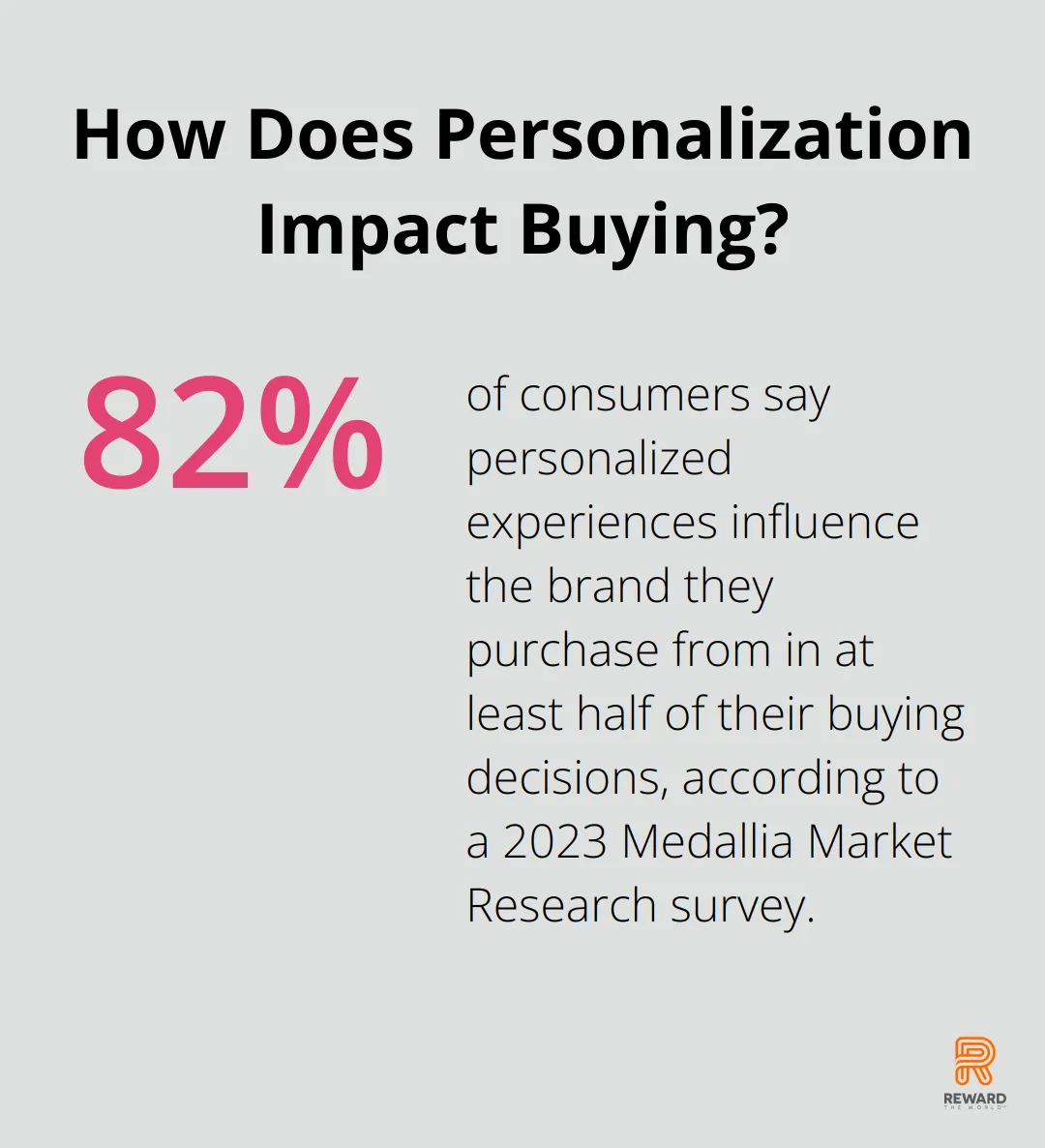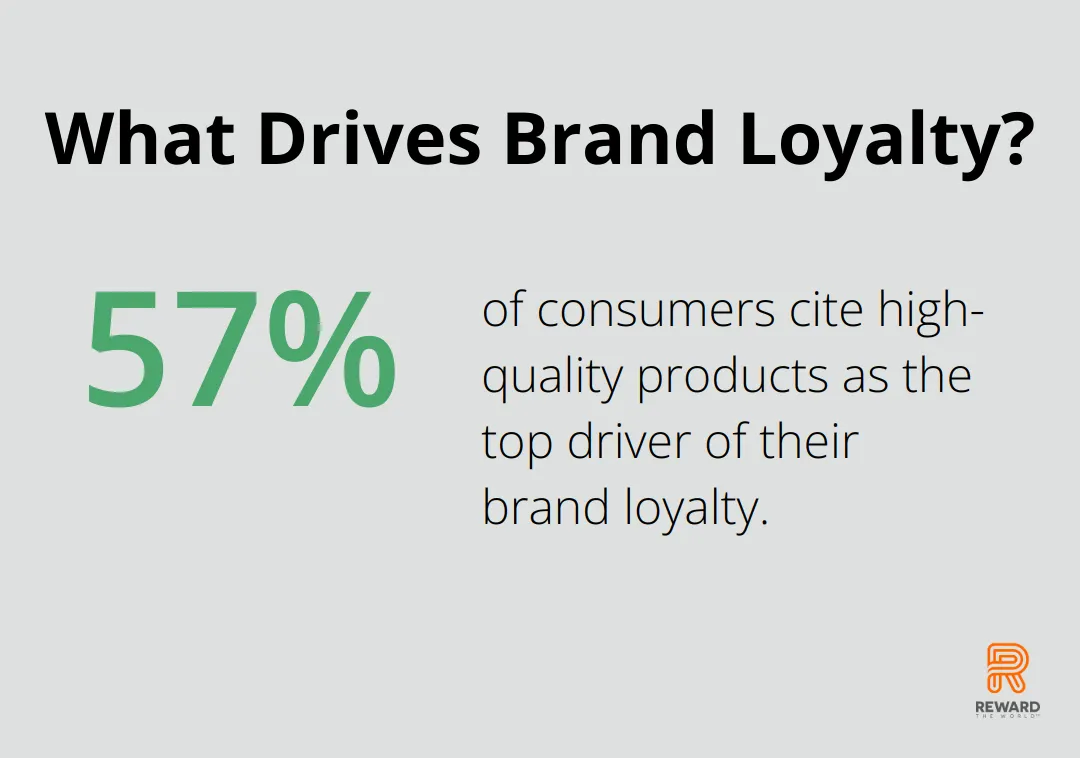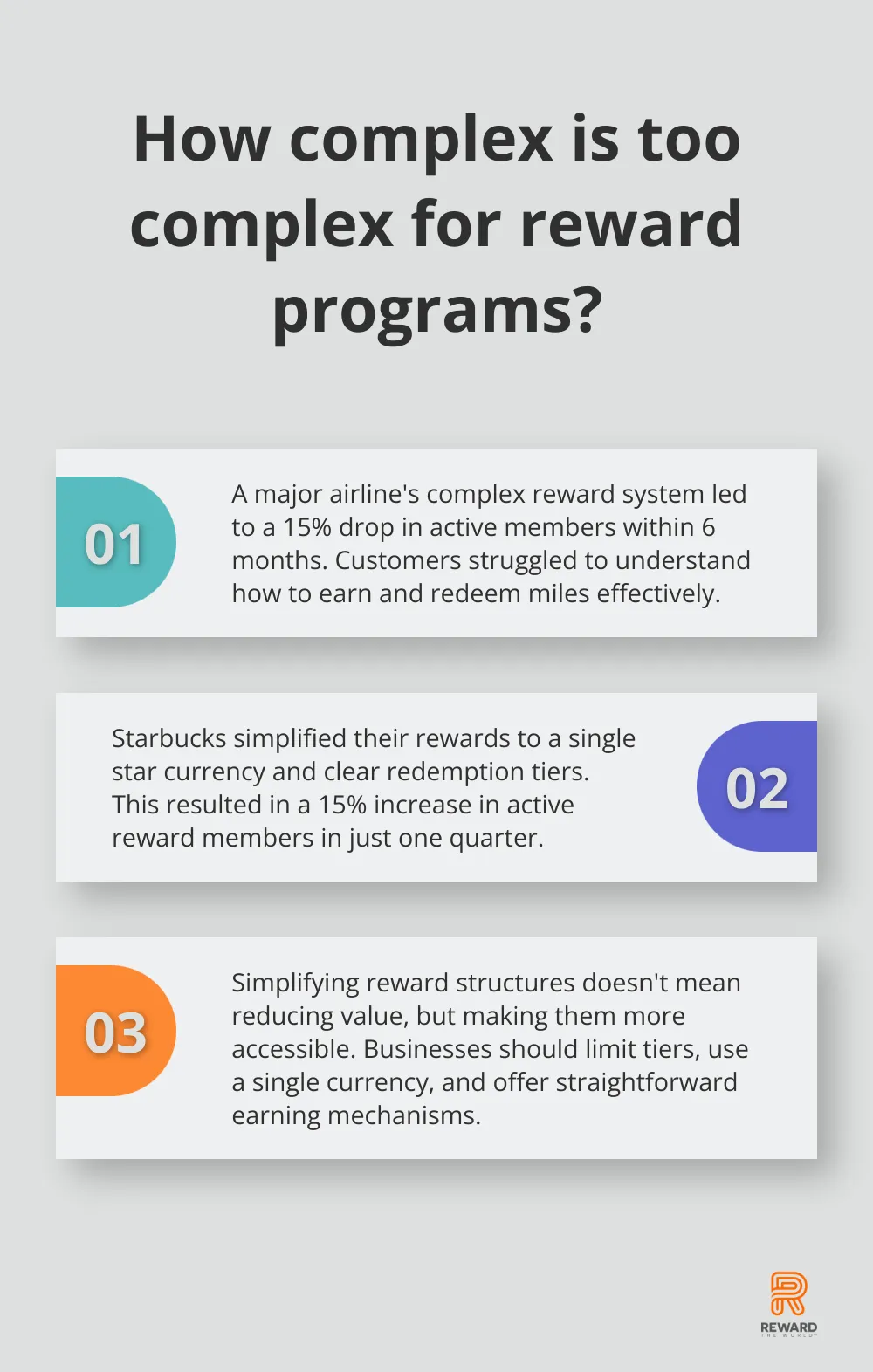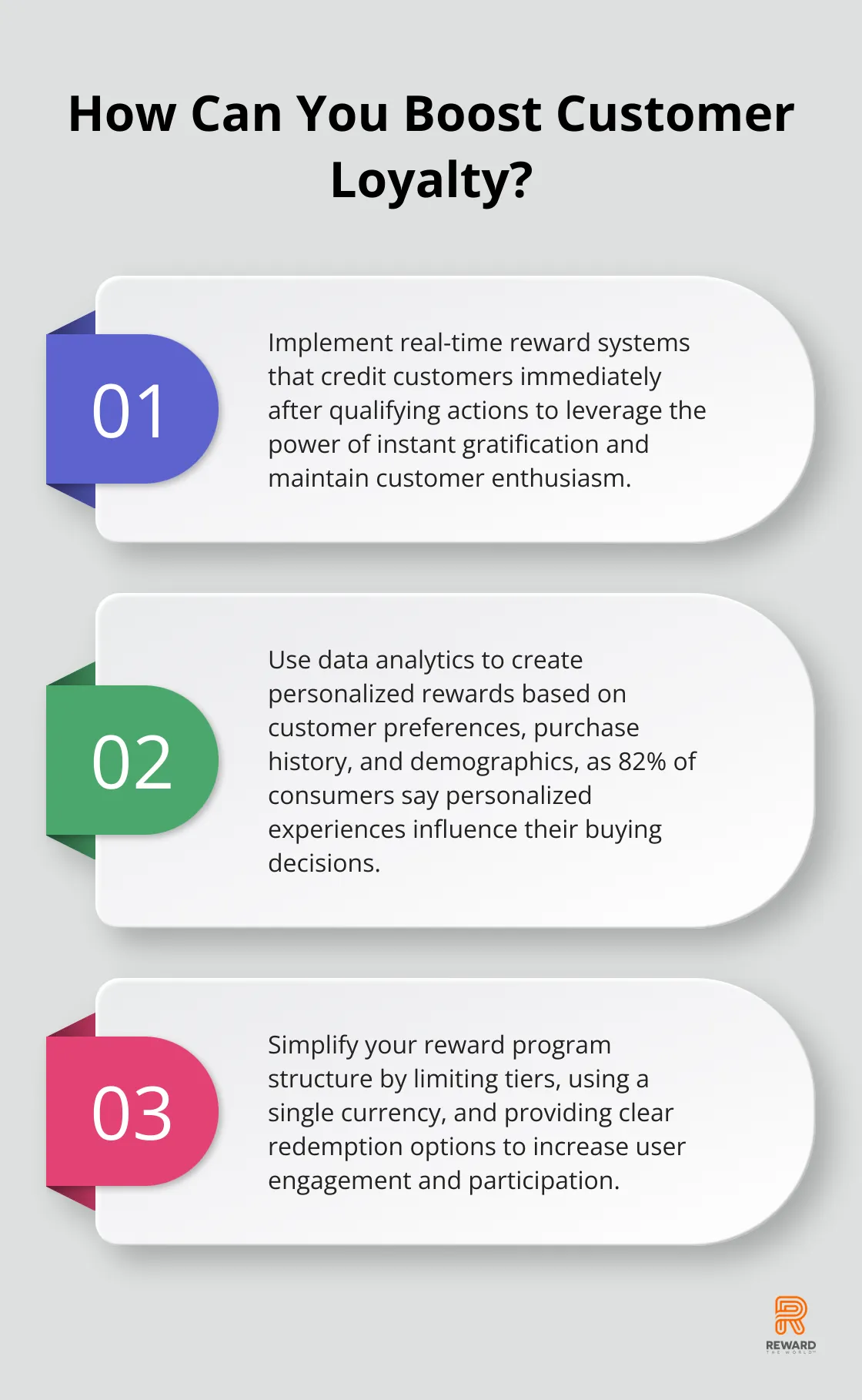At Reward the World, we’ve seen firsthand how some reward programs fall short of their goals.
Incentive psychology plays a crucial role in understanding why certain rewards fail to motivate customers.
This blog post explores the common pitfalls that businesses encounter when designing and implementing reward strategies, and offers insights on how to avoid them.
Why Are Your Rewards Missing the Mark?
One-Size-Fits-All Approach Falls Short
Many companies offer generic rewards that don’t account for individual preferences. A 2023 Medallia Market Research survey found that 82% of consumers say personalized experiences influence the brand they end up purchasing in at least half of their buying decisions. This statistic highlights the importance of tailoring rewards to match customer interests and behaviors.
Demographic Blind Spots
Understanding your customer base is essential. A reward that appeals to millennials might not resonate with baby boomers. Research has shown differences in how Gen Z and Millennials perceive social media influencer authenticity. This generational gap in values can significantly impact the effectiveness of your rewards program.
Cultural Nuances Matter
In our globalized world, overlooking cultural differences can be a costly mistake. What’s considered valuable in one culture might be perceived differently in another.
Data-Driven Personalization
To avoid these pitfalls, businesses should invest in robust data analytics to understand their customers better. Customer segmentation involves gathering relevant customer data from various sources, such as purchase history, demographics, online behavior, and feedback. Using analytics tools to analyze this data can help create more targeted and effective reward offerings. Regular surveys and feedback sessions can provide valuable insights into what your customers truly value.
The Power of Customization
The most successful reward programs make customers feel understood and appreciated. Aligning your rewards with customer values and preferences will not only motivate them but also foster long-term loyalty. This approach can lead to increased customer retention and higher overall satisfaction rates.

As we move forward, it’s important to consider how the timing and consistency of reward programs can impact their effectiveness. Let’s explore why poorly timed or inconsistent rewards can fail to motivate customers, even when they’re well-designed.
When Timing and Consistency Make or Break Rewards
The Power of Immediate Gratification
Instant rewards pack a punch. A study found that loyalty programs can alter normal market patterns of repeat-purchase behavior. This fact underscores the importance of swift reward delivery to maintain customer enthusiasm.

Consider this scenario: A coffee shop offers a free drink after 10 purchases but takes a week to credit the reward. They risk losing customers to competitors who provide instant gratification. The delay weakens the positive link between purchase and reward, potentially reducing its motivational impact.
Trust Through Consistency
Unpredictable reward availability frustrates customers. A survey revealed that 57% of consumers cite high-quality products as the top driver of their brand loyalty. However, this goodwill can evaporate quickly if rewards change without notice or become unpredictably available.
Picture an airline that suddenly alters its mileage redemption rates without warning. This action not only irritates customers who planned to redeem their miles but also erodes trust in the entire program. Clear communication about changes and consistent availability are essential to keep customers engaged.
Syncing with Customer Journeys
Rewards that don’t align with a customer’s journey often miss the mark. McKinsey research shows that personalized experiences drive up both customer loyalty and a company’s gross sales. This principle extends to reward timing as well.
For example, a discount on winter coats in midsummer might fall flat, regardless of its generosity. Similarly, offering a “first-time purchase” reward to a fifth-time customer shows a lack of understanding of their brand relationship.
Practical Steps for Impactful Timing
- Implement real-time reward systems that credit customers immediately after qualifying actions.
- Use data analytics to predict peak engagement times and schedule your offers accordingly.
- Create a consistent reward schedule (and communicate any changes well in advance).
- Map your customer journey and align rewards with key touchpoints and milestones.
The timing and consistency of your reward program can significantly enhance its effectiveness in motivating customer behavior. A well-timed reward often makes the difference between a one-time buyer and a loyal brand advocate.
As we’ve seen, timing and consistency play vital roles in reward effectiveness. However, even perfectly timed rewards can fall short if their structure is overly complex or unclear. Let’s explore how the design of reward programs can impact their success or failure.
Is Your Reward Program Too Complex?
The Simplicity Principle
Simplicity stands as the cornerstone of successful reward programs. This statistic underscores the importance of straightforward program design.
Complexity: A Common Pitfall
Many businesses erroneously create intricate reward systems, believing they offer more value. This approach often backfires.
A major airline recently revamped its frequent flyer program, introducing multiple tiers and point categories. The result? A 15% drop in active members within six months. Customers struggled to understand how to earn and redeem miles effectively.
The Importance of Clear Communication
Transparency in reward accumulation and value is essential.
To address this, businesses should:
- Use simple, jargon-free language in all communications
- Provide easy-to-access FAQs and support channels
- Offer real-time updates on reward progress and value
Streamlining for Success
Simplifying your reward structure doesn’t mean reducing its value. It’s about making it more accessible and user-friendly. Here are some practical steps:
- Limit the number of tiers or levels in your program
- Use a single currency (points, miles, etc.) instead of multiple types
- Offer a straightforward earning mechanism (e.g., 1 point per dollar spent)
- Provide clear, attainable redemption options

The Starbucks Rewards program exemplifies this approach. They simplified their system to a single star currency and clear redemption tiers. This led to a 15% increase in active reward members in just one quarter.
User Experience Matters
A smooth, intuitive user experience can make or break a reward program. Forrester’s research reveals the immense value – for both customers and banks – of useful, convenient digital banking experiences. This principle applies strongly to reward programs.
Businesses should invest in a user-friendly app or website interface. Checking points, understanding rewards, and redeeming them should be a hassle-free process. Regular usability testing and customer feedback can guide continuous improvements.
Final Thoughts
Reward programs can motivate customers, but their success depends on careful design and implementation. Misalignment with customer values, poor timing, inconsistency, and complex structures often lead to program failures. These issues highlight the importance of a customer-centric approach in reward design.

Incentive psychology plays a vital role in creating effective reward strategies. Companies must focus on personalization to match individual preferences and demographics. Timely reward delivery reinforces positive behaviors, while consistency builds trust and engagement (simplifying reward structures can significantly enhance program participation).
We at Reward the World help businesses design and implement effective reward programs. Our platform offers instant reward delivery, a wide selection of rewards, and robust analytics to drive customer engagement. You can create reward programs that resonate with your customers, foster loyalty, and drive growth with our turnkey solution.
